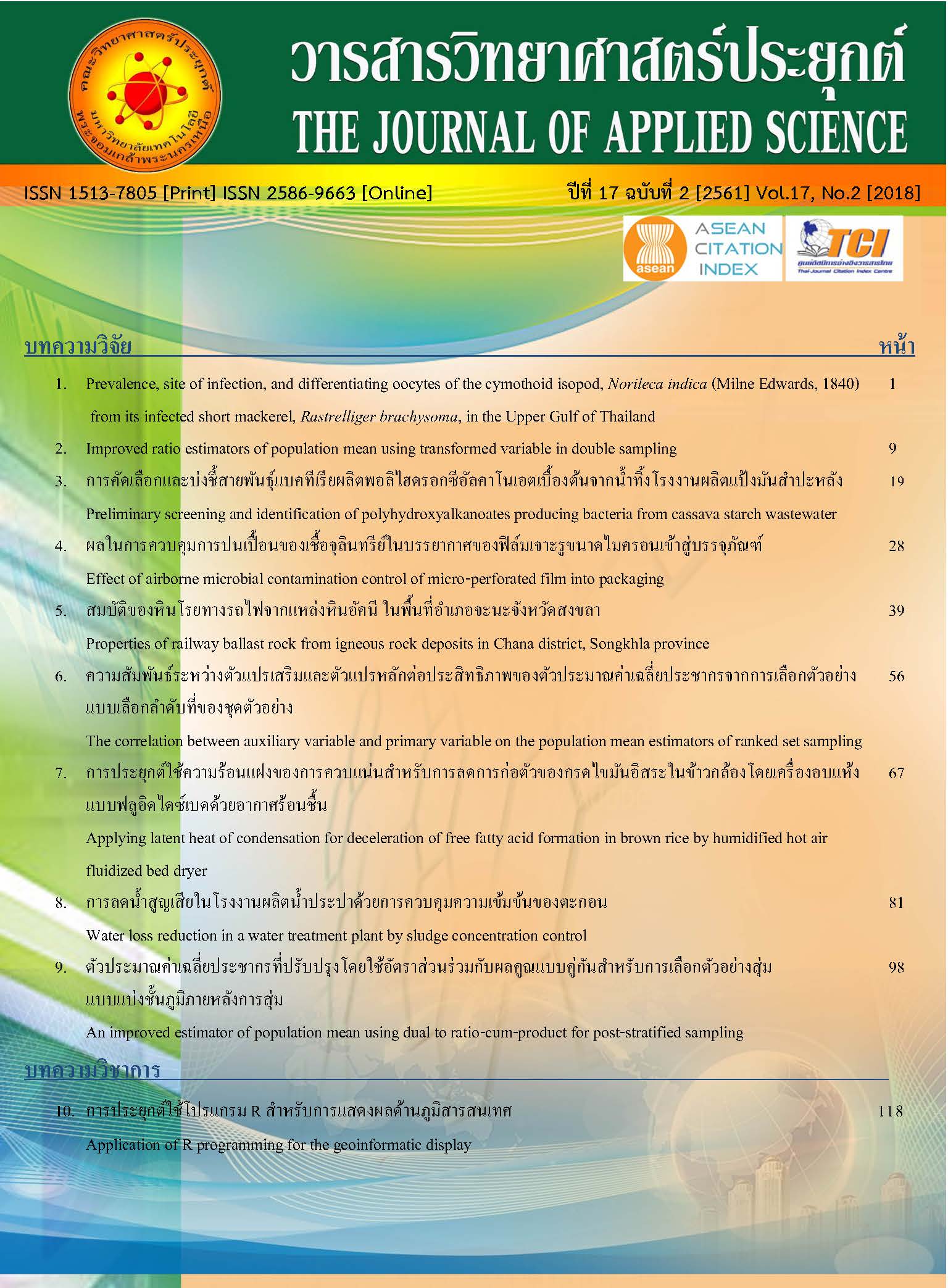Water loss reduction in a water treatment plant by sludge concentration control
Keywords:
water loss reduction, design of experiment, sludge concentrationAbstract
This research aimed to determine the optimum level of concentration of sludge in the superpulsator settling tank at a tap water treatment plant in Bangkok in order to control sludge concentration applying in rainy season of Thailand. This could reduce the water loss and sludge blockage problems during conditions of that time. The reduction of water loss is an effective way to improve efficiency of the tap water treatment. We applied the full factorial design of experiment which consisted of two main factors, such as alum rate and impact rate. Each factor comprised of three levels. A factorial experiment was then conducted with three replications. After running the system for 40 minutes, the water was drained and sludge samples were collected. After the samples were left for 20 minutes, we then read the value of sludge separating from the water. The results were analyzed at 95% confidence interval. According to the results, both factors significantly affected the sludge concentration. The optimum condition of alum rate was 100 litres per hour and the optimum condition of impact rate was 65 times per hour. When the system was controlled by these optimal factors, we could reduce water loss and sludge blockage problems at 38% and 100%, respectively.


